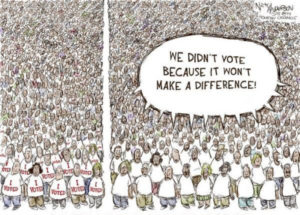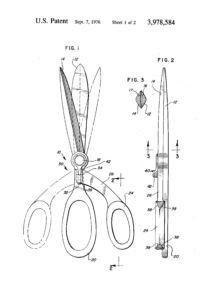
Image from Wikipedia, by Mushki Brichta creative commons copyright: CC BY-SA 4.0
(Updated November 15)
This is a list of things I want the current government to do in the period before January 20. Some of the list items have specific action items we can take to push for change. I’m updating the list as I hear or think of more ideas. See below for resources, more such lists, and updates about what is already being done.
General Action Item: There’s a broad MoveOn petition urging President Biden to do everything he can to protect our rights and democracy. Consider joining the 49,000+ people who’ve signed it. (Not clear when it goes to Biden.)
Other Action Lists
– Susan Rogan (no relation to Joe Rogan) is posting daily actions people can take, including state-specific actions, on her Substack, Rogan’s List.
– There’s a website called 5 Calls (5calls.org) which allows you to filter by location and topic to bring up phone numbers of your representatives (national and/or state as relevant to the issue), plus detailed information and short scripts to use in calling.
My List
– Nominate and confirm more judges everywhere.
Action Item! The Federal Court currently has 47 judicial vacancies, with 17 nominees pending, and there are also 20 future vacancies, with 11 nominees currently pending. If you have a Democratic senator (or two), please call them and urge them to fast-track hearings and confirmations for these nominees, and to work on filling the other vacancies.*
– Protect all wildlife areas at the southern border. In fact, negotiate international agreements with Mexico to do it.
– Dissociate the government/NASA/communications from Starlink and muskrats (nothing against actual muskrats). Can the government end these contracts?
– On every sign saying “Project funded by Biden’s Bipartisan Infrastructure Law,” include the names of local representatives who voted against it (which would have been better done before the election, but alas I didn’t think of it).
– Endure all DT appointments go through the proper Senate confirmation process.
Action Item! Contact your senators, regardless of party, and demand that they not allow recess appointments at this critical time, so that nominees can get a fair hearing. If you like, you can join the Democratic Coalition’s letter-writing campaign for this. (11/14/24)
Action Item! Bring Matt Gaetz to Justice, not the Justice Department. Let’s be sure to call our senators and tell them to vote no on Gaetz for Attorney General, and pull out all the procedural stops to block his nomination. Let’s also contact the Democrats serving on the Ethics Committee and urge them to ensure the public sees whatever damning information they have found before any confirmation vote, whether by reading the report into the Congressional Record or leaking it to the press. (11/14/24) We can reach them here:
- Rep. Susan Wild (PA, Ranking Member) – 202-225-6411
- Rep. Mark DeSaulnier (CA) – 202-225-2095
- Rep. Veronica Escobar (TX) – 202-225-4831
- Rep. Glenn Ivey (MD) – 202-225-8699
- Rep. Deborah Ross (NC) – 202-225-3032
– Protect our personal data from seizure without a warrant (source: ACLU)
Action Item! The ACLU is organizing public comments before December 16 on proposed legislation known as the Fourth Amendment Is Not For Sale Act. (Note: Because I was curious about whether we could make our own comments, I went to the public register website and was unable to find anything relevant. If you find out, let me know!)
– Halt arms to Netanyahu’s government; motivate a ceasefire and an agreement with Hamas. (Not sure how to motivate Hamas, who, just like Netanyahu, clearly value the war above their own people’s safety.)
Possible Action Item?
Earlier today, someone posted a petition from J Street, known as “the political home of pro-Israel, pro-peace, pro-democracy Americans,” urging the government to sanction certain Israeli ministers. I now can’t find it, and the petitions I can find are not dated. However, I do see press releases on this subject and a number of others from the past few days. Maybe that petition is over, but there may be more. (11/15/24)
- J Street Urges White House to Impose Sanctions on Extremist Israeli Ministers and Organizations
- J Street to Biden Administration: Time to Withhold Some US Weapons to Israel for Continuing to Block Humanitarian Assistance to Gaza
- J Street Vehemently Opposes Nomination of Mike Huckabee as US Ambassador to Israel
– Make it very, very clear, in all the press, that once again, Trump is inheriting an amazing economy from Biden, just as he did from Obama. (Not stock market but wages, jobs, employment, manufacturing, supply chains.)
Action Item! The to-do item is for the White House but also for the press, so the action item is for contacting your news sources — letter to the editor, emailing journalists you read, comments to people you follow on Twitter or Bluesky, etc. — asking them to do not just an article but a series, before January, on the Biden/Harris economy, including their work on supply chains, the manufacturing jobs from their wide-ranging legislation, higher wages, union support, the soft landing, etc., and to include projections of the ongoing effects this work will have over the next few years. Explain, if you want to, that you want this to be out there to counter the push of the next administration to claim credit.
– Save all White House web pages.
– Protect our right to dissent and organize.
Repeat Action! House is planning to vote again.
From the ACLU: “This broad, vague bill is an open invitation for abuse…a bill that would give the incoming Trump administration a new tool they could use to stifle free speech, target political opponents, and punish groups that disagree with them.”
While one section gives tax relief to Americans held hostage, another section gives the Secretary of the Treasury the discretion to declare tax-exempt organizations to be terrorist organizations. (So when I called, I said I was urging my rep to vote no based on that part in particular) (Updated 11/15/24)
– Raise the cap on the House of Representatives to restore some balance to the electoral college, if we must have it … and if we still have it.
– Expand the Supreme Court and nominate people to serve. Rush the hearings. (Tricky part: Manage this without leaving seats open.)
Well, and if we’re doing fantasy:
– Declare that every law that is passed henceforward must have a clear training portion and no vagueness. If doctors are to make decisions between healthcare and 99 years in jail, they must be told exactly what circumstances are legal or illegal and when they can use their own judgement, none of that “oh, of course we didn’t mean that” afterward. If books are to be banned, they must have transparent, exact standards so that everyone knows and there is no guessing. If families are to be separated, then the roles of everyone involved must be clear and trackable. If people are arriving in the US by airplane and are suddenly banned from arrival while they’re in the air, don’t leave it up to random TSA or airport personnel how to manage them.
Further Actions and Resources:
– Susan Rogan (no relation to Joe Rogan) is posting daily actions people can take, including state-specific actions, on her Substack, Rogan’s List.
– Elizabeth Warren has a plan. Most of it is broad and procedural, but I’m pleased to see one of her two specific directives is already on my list.
– Here is a cautionary tale, with one takeaway: everyone in government who can push back on or question a policy idea as soon as it comes up must commit to doing so. PBS transcript, How a Trump-era policy that separated thousands of migrant families came to pass.
Updates of work in place:
– I’ve read that Biden is locking in the distribution of funds for the Inflation Reduction Act!
The main source I’ve found is not from this week but from Politico in September.
– Success in first vote! H.R.9495, the “Terror Financing” bill, failed to reach 60% in the House. Alas, in second vote, they needed only a majority, and they had it.
___________
* Thanks to Karen Escovitz and Kate Hellenga for bringing this action to my attention.
 If you, or someone you know, is wondering “Why should I bother to vote today?” my current answer isn’t about the vast sweeping changes across the nation in the past two years and the fate of our democracy. My current answer is this:
If you, or someone you know, is wondering “Why should I bother to vote today?” my current answer isn’t about the vast sweeping changes across the nation in the past two years and the fate of our democracy. My current answer is this:
 I recently requested, and acquired, a pair of left-handed scissors for my office. I was pleased to discover, with a quick search, that it was possible to order explicitly left-handed titanium-bonded scissors that exactly matched the scissors in the copy room cabinets. In fact, as I discovered when they arrived, they say “LEFTY” only on the package and not on the scissors, which say merely “Westcott titanium” and are therefore indistinguishable from the right-handed scissors except for the orientation of the blades. I held them up together to check. And then, alas, I had to check the other right-handed scissors in the cabinet to make sure I took my own set back to my office.
I recently requested, and acquired, a pair of left-handed scissors for my office. I was pleased to discover, with a quick search, that it was possible to order explicitly left-handed titanium-bonded scissors that exactly matched the scissors in the copy room cabinets. In fact, as I discovered when they arrived, they say “LEFTY” only on the package and not on the scissors, which say merely “Westcott titanium” and are therefore indistinguishable from the right-handed scissors except for the orientation of the blades. I held them up together to check. And then, alas, I had to check the other right-handed scissors in the cabinet to make sure I took my own set back to my office. And why shouldn’t I trust the marketing? I’m so glad you asked. I don’t trust the marketing because Things Have Changed in scissor handedness world. For example, I’ve asked whether there are left-handed scissors available for my kid in a craft situation, and I’ve been told that all the scissors should work for both hands. And when I dismiss this as ridiculous, and go off to find scissors (for kids or grownups) in an office supply store, I find packages that actually, explicitly say “left or right handed”.
And why shouldn’t I trust the marketing? I’m so glad you asked. I don’t trust the marketing because Things Have Changed in scissor handedness world. For example, I’ve asked whether there are left-handed scissors available for my kid in a craft situation, and I’ve been told that all the scissors should work for both hands. And when I dismiss this as ridiculous, and go off to find scissors (for kids or grownups) in an office supply store, I find packages that actually, explicitly say “left or right handed”.
